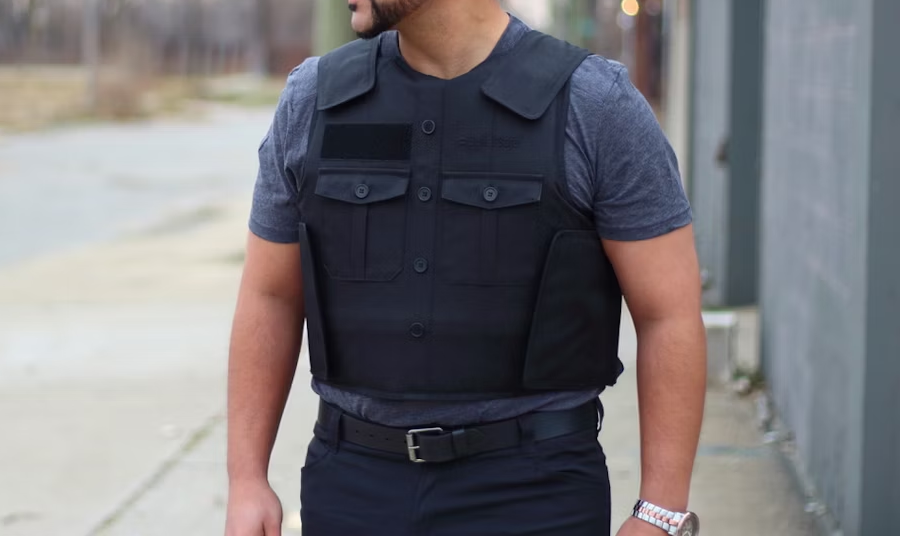Humans have always been skeptical of new ideas, no matter how groundbreaking they might turn out to be. Take, for instance, Benjamin Rush, the American physician and founding father, who believed that drinking cold water on a hot summer day could kill a man. Or consider the early American car manufacturers who were mocked for “fiddling with buggies that would run without horses.”
So, it’s no surprise that when the first lightweight bulletproof vests hit the scene, police departments didn’t exactly roll out the red carpet. Richard Davis, the man who turned Dupont’s Kevlar tire fabric into bulletproof armor, had to go to some wild lengths to make his first few sales. He shot himself with a .44 Magnum almost 200 times in front of potential buyers just to prove his vests worked. In the 1970s, the idea of a light vest stopping a bullet sounded like something out of a sci-fi movie.
Before the invention of ballistic fiber, people assumed that the eternal arms race between the killing power of weapons and the defensive ability of armor had been thoroughly won by the gun, since any armor capable of stopping high-velocity ammunition would have to be so large, thick, and heavy that it would immobilize or suffocate the user. So, when Davis rolled out a vest that felt like a heavy backpack wrapped around your chest and said it could stop the most powerful handgun in the world, folks were understandably skeptical.
Even after Davis proved the vests worked—over and over—only about 30% of the officers in departments that purchased the vests actually wore them, despite departments making them mandatory. The big issue? There weren’t any solid standards to prove whether these vests were really up to the task. Since this was literally a matter of life and death, police departments turned to Congress for help. The great minds in Washington DC got together and mandated that all future body armor should conform to a standard, which was when the National Institute of Justice (NIJ) stepped in with some serious testing to see if these vests would work as advertised.
At first, things didn’t look so great. About half of the commercially available body armor failed the NIJ’s tests, and manufacturers weren’t too happy about it. They complained that the standards were too strict. Davis’s company even said that to pass, his vests would need to be so thick and bulky that no cop would want to wear them. But the NIJ held firm, saying that any vest passing their tests would be reliable on the street.
Fast forward to today, and BulletSafe vests aren’t struggling with those early issues. Their products, like the VP3 and VP4, proudly wear the “NIJ certified” label. BulletSafe vests are trusted by cops, security professionals, and civilians worldwide because of their blend of lightweight but tough materials. Made from ultra-high molecular weight polyethylene and aramid fibers, these vests are strong enough to stop most pistol rounds up to a .44 Magnum.
The story of bulletproof vests going from a gimmick to a must-have tool for safety took decades to get to where we are today. Thanks to strict standards and constant improvements, today’s body armor is reliable and comfortable enough that you’ll actually want to wear it. BulletSafe has become a go-to brand because they’ve figured out how to combine lightweight materials with serious protective power. With every advancement, we move further away from the skepticism of the past, showing just how far technology can go to keep us safe without weighing us down.
To shop BulletSafe vests, click here.
Frequently Asked Questions
1. Why were early lightweight bulletproof vests met with skepticism?
Early lightweight bulletproof vests were met with skepticism because the idea of a light vest stopping a bullet sounded like something out of a sci-fi movie at the time.
2. How did Richard Davis prove the effectiveness of his bulletproof vests?
Richard Davis proved the effectiveness of his bulletproof vests by shooting himself with a .44 Magnum almost 200 times in front of potential buyers.
3. Why were only about 30% of officers wearing the mandatory bulletproof vests?
Only about 30% of officers were wearing the mandatory bulletproof vests because there weren't any solid standards to prove whether the vests were really up to the task.
4. What role did the National Institute of Justice play in the development of bulletproof vests?
The National Institute of Justice mandated standards for body armor testing to ensure reliability, which led to the certification of vests like BulletSafe.
5. What materials are BulletSafe vests made from?
BulletSafe vests are made from ultra-high molecular weight polyethylene and aramid fibers, making them strong enough to stop most pistol rounds up to a .44 Magnum.

